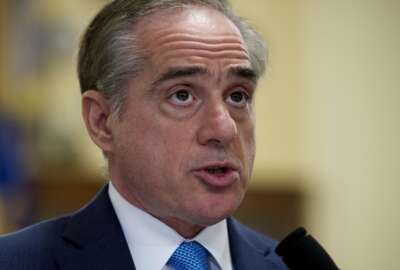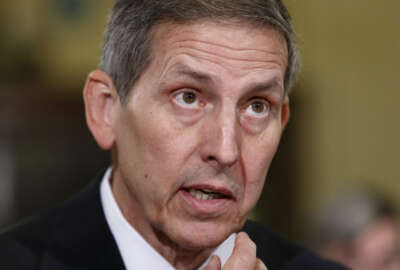
Lawmakers see progress in veterans crisis hotline, but it’s still far from ‘fixed’
Veterans Affairs Department employees are now answering 99.8 percent of veterans' calls to the VA crisis hotline, and fewer than 1 percent of those calls are...
Lawmakers were shocked in 2016 and again last month to hear that the Veterans Crisis Line (VCL), the 1-800 suicide crisis hotline that the Veterans Affairs Department operates, couldn’t handle and properly manage the calls it received from veterans who need help.
But the department said very recently those problems have been fixed.
VA employees are now answering 99.8 percent of veterans’ calls, and less than 1 percent of calls coming to the crisis line are rolling over to VA backup centers. Since January, the department has experienced 43 days where no calls have rolled over to the backup center, Steve Young, deputy undersecretary for operations and management at the Veterans Health Administration, told the House Veterans Affairs Committee during an Apr. 4 hearing on the crisis line.
VA has also more than doubled the number of VCL employees to respond to veterans calls. It now has 661 employees, compared with a little more than 200 workers one year ago. Staff are picking up the phone within eight seconds on average, he added.
But given the seriousness of the topic — and VA’s track record — lawmakers are hesitant to declare recent progress with VCL a success.
“This is the one area where we are shooting for perfection,” Rep. Tim Walz (D-Minn.), ranking member of the House VA Committee, said. “Every single one of those calls is life or death. Every single one of those interventions is life or death, and if it’s viewed anything short of that, we’re certainly failing.”
Shortly after the VA Office of Inspector General released its latest report on the crisis hotline, new VA Secretary David Shulkin announced that the “the challenges with the Veterans Crisis Line have been resolved.”
“[With] the press release that came out after the IG report said you had fixed the problems, I would be very careful saying you fixed the problems with the VCL,” Walz said. “Just a suggestion.”
Despite VA’s recent progress, lawmakers and department Inspector General Michael Missal have plenty of worries.
The VCL function still lacks a permanent director, a position VA has struggled to keep filled. Young said the department advertised the position, and VA wasn’t satisfied with three candidates who submitted applications. An acting director currently leads the VCL.
The lack of permanent leadership has been troubling, and Missal said qualified clinicians need more of a prominent role in broadly managing the VCL and in responding to specific veteran concerns and calls for help.
In addition, VA has struggled to properly train and educate its VCL employees and document best practices and procedures for responding to veteran calls.
“Taking an organization where there are few to no [standard operating procedures] SOPs, no formal curriculum for responder training, no formal training for SSAs … [our] staff who coordinate emergency dispatches and attempts … that takes time to do that,” Matthew Eitutis, acting executive director for Veterans Health Administration’s Office of Member Services, said. “We very confident at this point where we have documented the procedures and canonized the processes for the responders that are taking these tough calls.”
Lawmakers have heard about these problems before, and they’re frustrated that after one warning from the inspector general, the department couldn’t address many of the root causes.
“These are reoccurring issues we see time and time again at the VA,” Walz said. “Once again, [there’s] no leadership, no director, no HR function, no training, no accountability, no following the GAO.”
VA was supposed to address the seven recommendations from the department’s Feb. 2016 inspector general report by the end of the fiscal year. But it didn’t, and VA now has 23 open IG recommendations after its inspector general once again found problems with the crisis line in March.
The department was in the middle of standing up and training new employees at a second VA-operated crisis line call center in Atlanta, Georgia, when the IG conducted its second investigation, Young said.
“This training took our other VCL responders away from their regular duties,” he said.
VA now has two department-run VCL call centers, and it’s currently renewing a contract with an outside backup call center. Negotiations should be finished by July, Eitutis said.
Young said the department plans to implement all IG recommendations by December. VA submitted nearly 400 pages of documents this month detailing how the department plans to address the IG’s first seven recommendations.
About 20 veterans commit suicide a day, according to VA’s latest estimates. That’s just slightly better than the department’s 2013 estimate of 22 veteran suicides a day.
Shulkin announced at the beginning of his tenure this year that veterans suicide would be his top clinical priority in 2017.
Copyright © 2025 Federal News Network. All rights reserved. This website is not intended for users located within the European Economic Area.
Nicole Ogrysko is a reporter for Federal News Network focusing on the federal workforce and federal pay and benefits.
Follow @nogryskoWFED
Related Stories




